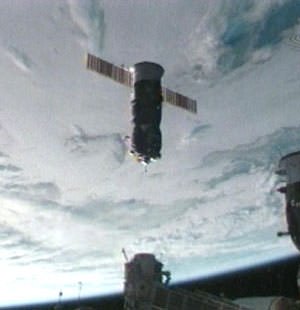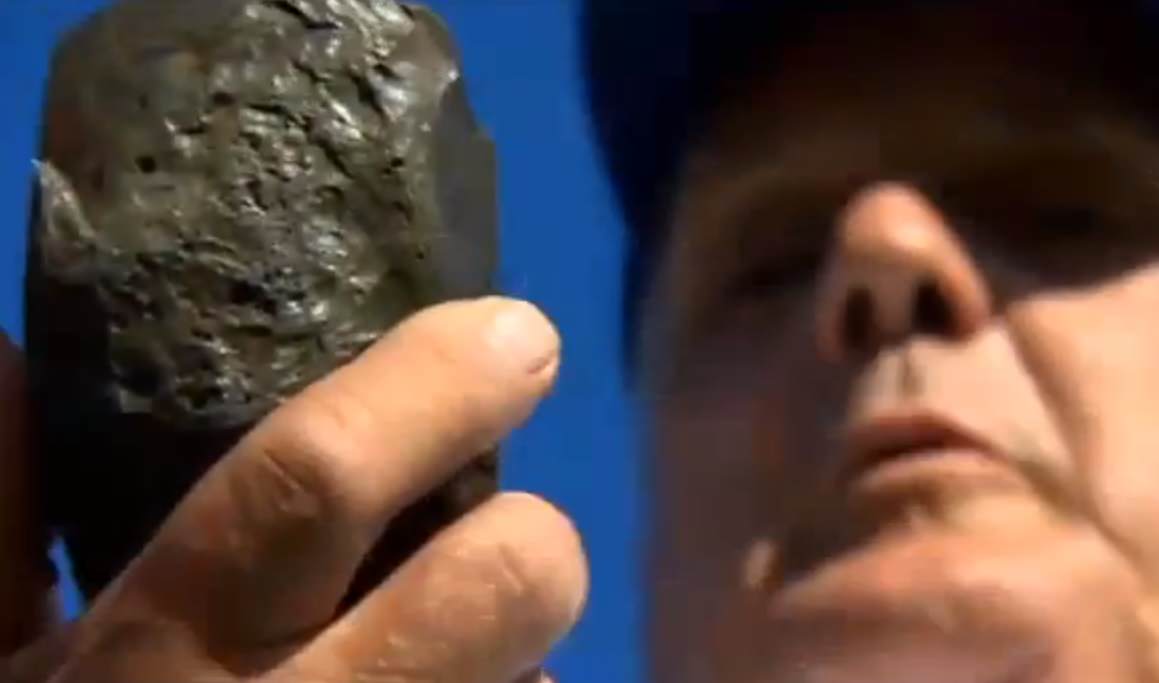We love a good space debris mystery. Hey, who doesn’t, right? Regular readers of Universe Today know that it’s a shooting gallery out there, from meteor fireballs caught on dashboard cams to rogue space junk reentries lighting up our skies.
But an unusual story that made its rounds across the internet this past weekend caught our attention. What at first glance was a simple “Man finds space rock” story morphed into an extraordinary claim, which, in the words of the late great Carl Sagan, “demand extraordinary evidence.”
The find was made by Phil Green of Amesbury, Massachusetts. Mr. Green was searching the local riverbed for arrowheads when he came across the unusual find. The black pitted rock immediately struck him as something bizarre. It didn’t register as metallic to his metal detector, but Mr. Green kept it in his backyard for about five years until it was noticed by a friend.
“I didn’t really think much of it, and then a fellow came over, saw it and said that’s a meteor,” Green told local reporters.
From here, the story takes a strange turn. Green told local reporters that the rock was sent off for analysis, only to be returned to him just a few weeks ago. The analysis confirmed that the rock was indeed from space… sort of. It also stated that the vitreous material “shows a composition similar to that used in ballast by the Soviet space program starting in the mid-1980s.”
And the word was out. The media quickly ran with the “Man finds a piece of Mir” story.
There are just a few problems with the tale. Mir reentered in 2001, six years before the 2007. A few articles do bother to note this, mentioning that Mir ended its career in the “so-called spacecraft cemetery of the southern Pacific Ocean,” about as far away from Massachusetts as you can get.
A few articles do also mention the possibility of a reentry of a Progress resupply vehicle being a potential source, or perhaps an unrelated Russian space vehicle.
But there seems to be a potential problem of the certification. Several articles state that the piece of debris coming from Mir was “confirmed by NASA.” However, Universe Today contacted NASA Chief Scientist for Orbital Debris Nicholas L. Johnson and NASA Headquarters official Joshua Buck, who both told us that no such NASA validation exists. Mr. Johnson went on to tell Universe Today that, “The NASA Orbital Debris Program Office has not been presented with any claim regarding debris from the Mir space station,” adding “I can tell you that it is not possible for debris from the Mir reentry to have landed in the U.S.”
A name that occasionally turns up in reports online as validating the find (withheld by request) also tells Universe Today that they had nothing to do with the discovery. Mr. Green or the original validation source have thus far been unavailable for comment.
We did uncover two documented reentries that occurred over the general region over the last few decades. One is the reentry of Mir-R 1986-017B (The rocket booster that launched the core module of Mir) seen from a trans-Atlantic airliner on February 24th 1986 about 500 kilometres off of the east coast of Newfoundland. Another possible suspect is the June 26/27th 2004 reentry of a SL-12 auxiliary rocket motor with the NORAD ID 1992-088E, seen to the west from New Jersey to Ontario.
Like the International Space Station, Mir was placed in a 51.6° inclined orbit. This made it accessible from the Baikonur Cosmodrome as well as visits from the U.S. Space Shuttle. Payloads going to and from the station would cover an identical ground track ranging from 51.6° north to south latitude.
The story is also reminiscent of the reentry of debris from Sputnik 4, which struck a small town in Wisconsin in 1962. This was analyzed by mineralogist Ursula Marvin and confirmed to be of Russian origin.

Probably the biggest question in our minds is: what links the object back to an errant Russian spacecraft? What do they use for ballast, anyhow? How did they arrive at the often quoted “85% certainty?” of the object’s origin?
Still, the find does look like something interesting. The pitting and the melted fusion crust are all reminiscent of reentry. We’ll keep researching this story, and for the time being we’ll leave it up to you, the diligent and insightful readers of Universe Today, to make up your own minds on this strange and interesting tale.


Looks like a typical piece of slag, from industrial-related smelting.
Hmmm… a wary suspicious report! What tests COULD be done on this object to tell whether or not it is a re-entry artifact? Material composition key? Would it even be worth trying?
Actually, I find nothing in the imaged piece to be consistent with “atmospheric reentry”. The vesicles and pitting I see are typical for industrial silicate slags and volcanic glasses. I see no “fusion crust” actually, just a solidified silicate melt with signs of weathering (part of the “pitting” could be surface solution due to weathering) and chipping.
When I saw this on the news.I immedietly ran to get a rock that has been on my shelf for 11 years or more in which was and is identical to this same piece pPhil Greene from Amesbury Mass. found.
I have watched the vidoeoover and over and examined his pictures.I have the exact same one.I found mine in my backyard in 2001-2002.I live in East Falmouth Mass. Cape Cod.
If anyone would like to see my piece/rock or help me to identify it, please contact me @
[email protected]
It would be wonderful to find out exactly what this is, where it came from, and why 2 people from massachusetts have the same exact strange so called space junk rock!!